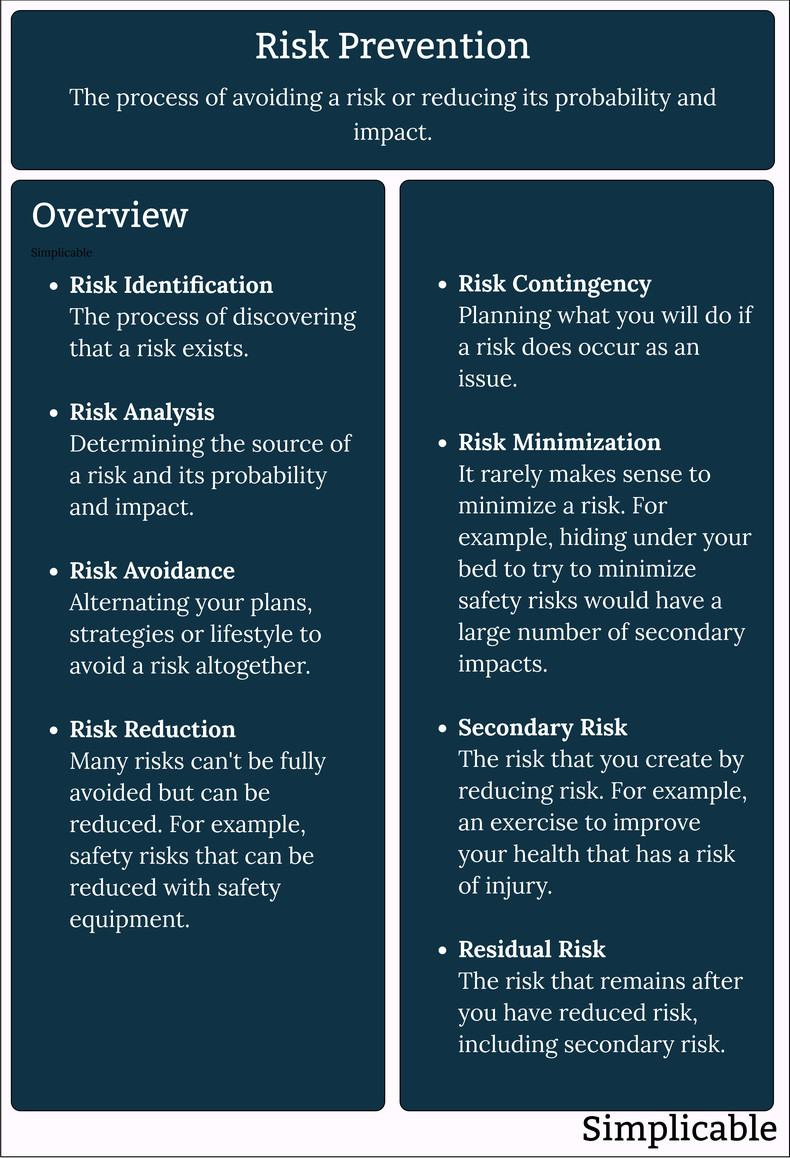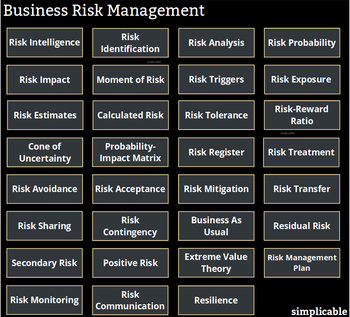
Risk Identification
The process of identifying the risks associated with a strategy, decision, process, procedure, event or action.Risk Analysis
Determining the probability, impact and triggers of identified risks.Risk Avoidance
Altering your strategies, decisions, processes, procedures, products or actions to avoid a risk. For example, a firm that reformulates its products to remove hazardous ingredients that represent a health and safety risk to workers.Risk Reduction
Taking steps to reduce the probability or impact of a risk. For example, a doctor who starts a patient on a low dose of a new medication to reduce the probability and impact of an adverse reaction to the medicine.Risk Contingency
Planning what you will do if the risk occurs in order to reduce its impact. For example, tsunami shelters and evacuation procedures.Risk Minimization
Risk minimization is the process of reducing the probablity and/or impact of a risk as low as possible. This can be expensive. For example, it may cost $10 to reduce a risk by 95% but $400,000 to reduce a risk by 99.8%. For this reason it is rare to use the word "minimize" in the context of risk management. However, some risks are minimized whatever the cost. For example, the design of an aircraft may seek to minimize the probability of an aircraft accident.Secondary Risk
A secondary risk is a risk that occurs due to your efforts to reduce risk. For example, if you have surgery to reduce the risk of a heart attack, the risks associated with the surgery itself are secondary risks.Residual Risk
Residual risk is the risk that remains after your efforts to treat risk. Generally speaking, risks aren't "prevented" but are reduced as residual risk usually remains even if you attempt to minimize risk.Risk Prevention vs Risk Management
Risk prevention and risk management have the same basic goals and methods. The term risk prevention is more often used in fields where risk has distinctly negative connotations such as in health, safety and crime prevention. The term risk management is used when risk has both positive and negative connotations such as in business and investing. For example, the terminology "risk prevention" isn't appropriate for an investment bank because some level of risk taking is required to put capital to work and produce value.Summary
The process of avoiding or reducing a risk.
| Overview: Risk Prevention | ||
Type | ||
Definition | The process of identifying, analyzing and treating risk. | |
Related Concepts | ||
































